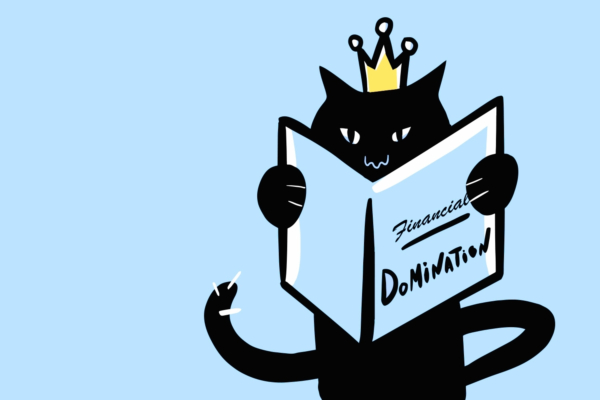
How Does Overdraft Protection Work?

If you have a checking account, you may be familiar with overdraft protection.
Overdraft protection is designed to help you avoid the embarrassment of having your card rejected at the checkout and provide a small safety net if you become short on funds. However: have you read all the fine print that comes with some financial institutions’ version of overdraft protection?
Opting-in to overdraft protection may sound like a no-brainer, but banks often don’t advertise that this service comes with hefty fees that can kick off a debt cycle. In this blog, we’ll explore what overdraft protection is, how it works, and why some forms of overdraft protection can be harmful.
Full disclosure: At Amplify, we believe the best way to help our community succeed is not to pile on fees when members are at their most vulnerable. That’s why our overdraft services are always $0.
Leave Your Bank Fees Behind
No account fees. No overdraft fees. No bank fees at all.
What is overdraft protection?
Overdraft protection is a service offered by many banks and credit unions to help customers avoid bouncing checks or having other transactions declined due to insufficient funds in their checking account. If the customer tries to make a purchase but doesn’t have enough money in the account, the bank will cover the charge so that the transaction goes through. The idea is that consumers are still able to make a needed purchase, even if they don’t have the funds available.
It may sound great, but there is a catch— overdraft protection is rarely free and can actually be quite costly.
How does overdraft protection work?
Overdraft protection is often a feature that account holders are asked to opt into when they open their account. Anytime you pay for a transaction that costs more than the amount you have in your account, overdraft protection kicks in to complete the charge, typically for an additional fee.
Average Overdraft Fees
In 2022, the average overdraft fee in the United States was $29.80 per overdraft. This does not include paying back the money that was overdrawn or any interest fees that may incur. Though $30 here and there may not seem like a lot of money, overdrafting your account can be a slippery slope that leads to a cycle of endless fees and debt.
Take the following, for example.
John went out shopping and forgot to check his bank balance before making a purchase. He swiped his card to pay, thinking he had enough money in his account to cover the $20 purchase. Unfortunately, John was wrong— he only had $15 in his account, and the $20 purchase overdrafted it by just a few dollars. Not realizing he overdrafted his account, John stopped on his way home to buy a bottle of water and a bag of chips at the gas station and swiped his card for $3.
John finds out later that because of overdraft protection, he is being charged an additional $70 in fees— $35 for each overdraft. On top of this, he is also being charged an ongoing fee for each day the amount remains unpaid, quickly accumulating a debt much larger than the original $8 he overdrafted. For John, a retiree on a fixed income, this is a major burden. His tight month-to-month balance just got even tighter, potentially leading to more overdrafts in the future.
The Effects of Overdraft Fees
This may sound like a rare occurrence, but it is actually very common. In fact, banks profit billions of dollars off overdraft fees annually. The Consumer Financial Protection Bureau released a report that revealed twenty banks each earned between $50 million and $1.4 billion in overdraft and non-sufficient funds fee revenue in 2021 alone.
An earlier report from the CFPB found that 8% of consumers overdraw their checking account more than ten times a year, paying nearly 75% of all overdraft fees nationally. The hefty burden of these fees falls disproportionately on low-income individuals and families, further adding to their financial struggles.
In 2010, the FDIC issued guidance on overdraft fees, saying “Some customers’ financial difficulties have been exacerbated by institutions’ overdraft payment practices and programs, even though the institutions maintain alternative programs more suitable for those customers. These circumstances can have an adverse impact on bank customers and present a potential risk of consumer harm.”
Know Your Rights with Overdraft Protection
According to the Consumer Financial Protection Bureau, the assessment of overdraft fees can constitute an unfair act or practice under the Consumer Financial Protection Act.
They say: “Overdraft fee practices must comply with TILA, EFTA, Regulation Z, Regulation E, and the prohibition against unfair, deceptive, and abusive acts or practices in Section 1036 of the CFPA. In particular, overdraft fees assessed by financial institutions on transactions that a consumer would not reasonably anticipate are likely unfair.”
Your protection doesn’t stop there. The FDIC issued guidance on overdraft protection in 2010 that among many things, restricts FDIC-insured banks from enrolling their members in overdraft protection automatically. They noted, “In many cases, fees are repeatedly charged and are often disproportionate to the amount originally intended to be funded. Some institutions manipulate their transaction processing order to maximize fee income.”
In this same guidance, the FDIC directly acknowledges the fact that banks used to enroll customers in overdraft protection automatically: “Customers have complained that they were not made aware of the existence or potential negative consequences of, or alternatives to, various types of overdraft coverage.”
If you suspect that you have been unreasonably or unfairly charged, you can ask your bank for a refund or report the situation with supporting evidence to the Consumer Financial Protection Bureau.
Overdraft Prevention and Protection at Amplify
In 2022, Amplify Credit Union made the decision to switch to a fee-free banking model for its members. This isn’t just on maintenance fees or transfer fees—we wanted to make sure no one paid an overdraft fee again. We did this in two ways:
- We introduced Rebound, an overdraft protection program that makes allowances for transactions where the balance may go into the negative.
- Every member is enrolled in an overdraft prevention program to prevent unexpected fees and charges from occurring. This program designates another account— such as a line of credit or savings account— as a backup to your checking account to cover overages. If you overdraw your account, money will automatically be taken from your backup account to cover the charge. If you don’t have a backup available, overdraft prevention will simply reject any transactions that would bring your account into a negative balance.
Bank Better with No Fees
No one needs banking fees—not the bank, and definitely not the consumer. When looking for a bank or credit union, be sure to look into fee structures, especially the fine print. Overdraft fees may seem small at first, but they can quickly add up and cost you more in the long run. While understanding your account and where you stand financially can help you circumvent these extra costs, the best way to avoid them is to bank with an institution that has gotten rid of fees altogether–like Amplify!


